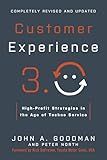Best Tools to Define Customers to Buy in January 2026

From Voices to Results - Voice of Customer Questions, Tools and Analysis: Proven techniques for understanding and engaging with your customers



The Strategic Key Account Plan: The Key Account Management Tool! Customer Analysis + Business Analysis = Account Strategy



The Challenger Sale: Taking Control of the Customer Conversation



Customer Experience 3.0: High-Profit Strategies in the Age of Techno Service



Mastering Customer Success: Discover tactics to decrease churn and expand revenue



Customer value analysis. Problemi di scelta ed esercizi svolti


In order to define your customers in your business proposal, you should conduct thorough market research and gather detailed information about your target audience. This includes demographics such as age, gender, income level, education, and location. It is also important to understand their interests, preferences, purchase behavior, and pain points.
By defining your customers, you can tailor your business proposal to address their specific needs and expectations. This will help you demonstrate a deep understanding of your target market and showcase how your products or services can provide value and solutions to them.
Additionally, it is important to consider the unique selling points of your business that appeal to your customers and differentiate you from competitors. This will help you position your business effectively and attract the right audience.
Overall, defining your customers in your business proposal is crucial for crafting a targeted and persuasive document that effectively communicates the benefits of your offerings and resonates with your target market.
What is the effect of social media on customer interaction and engagement?
Social media has a significant impact on customer interaction and engagement. Some of the effects include:
- Increased reach: Social media platforms allow businesses to connect with a larger audience, enabling them to interact with a broader range of customers.
- Real-time communication: Social media enables instant communication between businesses and customers, allowing for quick responses to inquiries, feedback, and complaints.
- Building relationships: Social media provides a platform for businesses to engage with customers on a more personal level, fostering stronger relationships and loyalty.
- Customer feedback: Social media allows businesses to gather feedback from customers in real-time, providing valuable insights for product improvements and customer service enhancements.
- Brand awareness: Social media helps businesses increase their brand visibility and reach a wider audience, resulting in increased customer engagement and loyalty.
- Customer service: Social media has become a popular channel for customers to reach out to businesses for support and assistance, making it crucial for companies to provide timely responses and solutions.
Overall, social media plays a crucial role in enhancing customer interaction and engagement, ultimately leading to improved customer satisfaction and loyalty.
What is the difference between target market and customer base?
The target market refers to a specific group of potential customers that a business aims to reach with its products or services. It is a broader and more general group that is identified based on demographic, geographic, psychographic, and behavioral characteristics.
On the other hand, the customer base refers to the actual group of customers who have purchased products or services from a business. It is a more specific and narrow group that consists of individuals who have already made a purchase.
In summary, the target market is the group of potential customers that a business wants to attract, while the customer base is the group of individuals who have already made a purchase. The target market is focused on attracting new customers, while the customer base is focused on retaining and serving existing customers.
How to analyze demographic data to understand your customer base?
- Gather the necessary demographic data: Start by collecting relevant information about your customers such as age, gender, location, income level, education level, occupation, family size, etc. This data can be obtained through surveys, interviews, online analytics tools, or customer feedback forms.
- Segment your customer base: Once you have collected the demographic data, segment your customer base based on common characteristics. This can help you identify different groups within your customer base and better understand their preferences and behaviors.
- Identify patterns and trends: Analyze the demographic data to identify patterns and trends among different customer segments. Look for commonalities and differences that can help you better understand your customer base and tailor your marketing strategies accordingly.
- Conduct customer profiling: Create customer profiles based on the demographic data to help you visualize and understand your target customers better. This can include creating personas that represent different segments of your customer base.
- Conduct market research: Use the demographic data to conduct market research and gain insights into the needs, preferences, and behaviors of your target customers. This can help you develop products and services that better meet the needs of your customer base.
- Use data visualization tools: Utilize data visualization tools such as charts, graphs, and dashboards to help you visually represent and analyze the demographic data. This can make it easier to identify patterns and trends within your customer base.
- Monitor and track changes: Continuously monitor and track changes in your customer base demographics over time. This can help you stay informed about evolving trends and make necessary adjustments to your marketing strategies.
- Use the insights to inform decision-making: Use the insights gained from analyzing the demographic data to inform your decision-making process. Tailor your marketing efforts, product development, and customer service strategies to better meet the needs of your target customers.
Overall, analyzing demographic data can help you better understand your customer base, identify opportunities for growth, and develop more effective marketing strategies. By utilizing this information, you can create targeted campaigns that resonate with your target audience and ultimately drive business success.
